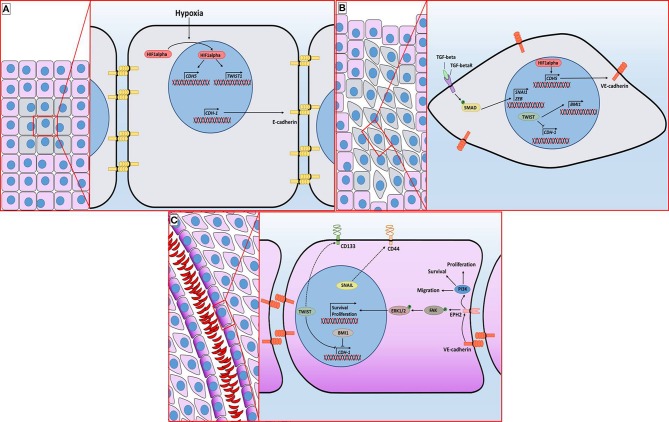Figure 2.
Molecular mechanisms associated with vasculogenic mimicry in breast cancer. (A) The incipient malignant tumor retains its epithelial architecture through adherens junctions mediated by E-Cadherin but has an innermost hypoxic core (gray cells). Hypoxia promotes the stabilization of HIF1alpha, which is followed by its translocation to the nucleus, granting access to its target genes. (B) TGFβ signaling and hypoxia-induced TWIST expression promote the epithelial-mesenchymal transition. E-Cadherin loss provokes a distortion of the epithelial architecture. (C) The sequence of molecular events initiated by hypoxia ultimately leads to the acquisition of cellular features associated with VM vessel formation, including the presence of EPH2 and CD44 in the plasma membrane. The purple gradient of the cells lining the lumen of the VM vessel is intended to represent PAS staining. Dotted line indicates an indirect interaction.

